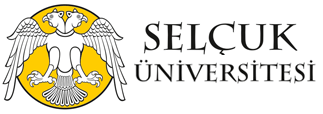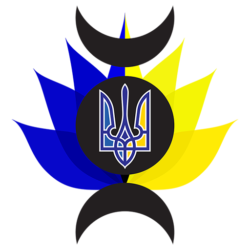Cultic Theatres and Ritual Drama
Ritual drama subject research
Links to institutions and papers
Posted on the night of the full cold moon
Explaining Cultic Theatres and Ritual drama to the modern non-christian requires a definition. Rather than a definition an example would be: The Cultus of Aphrodite would be practiced in the Temple of Aphrodite and/or the Sanctuary of Aphrodite. [A cult is the care of a God or Goddess. The cultus is the system or variety of religious worship] A cultic theater play or ritual and enactment is what they performed during feasts as well as for other ceremonies. As far as we know some of the Cultic Theater and Ritual Drama performed in San Francisco and Los Angeles in the latter half of the 20th century after WWII had not been enacted or performed for thousands of years. With help from the academic community in the University of California and The California State University, research and practical knowledge was shared between practitioners and professors.
One of the questions discussed with the professors was the subject of Cultic Theatres and Ritual Drama which was a major obstruction to the recognition of ancient religious practices by the state, local and federal governments of the United States of America. This is NOT a small issue and was directly tied into the 1960’s and 1970’s religious civil rights movements. This simple question of what was a governmentally recognizable religious observance of a prayer, a ritual or a rite was and still is a major topic when we begin to consider various forms of care and worship that were indigenous public and private observances, rituals and ceremonies. Some of these early observances were forcibly broken up by various US federal, state and local police agencies. Indeed the problem remains to this very day that people do not understand that the religions are now 100% legal. The pieces are finally in place to accurately describe and protect one of the most sacred American liberties. The Freedom of Religion

As a work of Office of War Information, a branch of the United States Federal Government, this work is in public domain.
From Wikipedia: Cult is literally the “care” (Latin cultus) owed to deities and to temples, shrines, or churches. Cult is embodied in ritual and ceremony.
Its present or former presence is made concrete in temples, shrines and churches, and cult images, including cult images and votive offerings at votive sites. For more on the Ancient Greek religions or cults please click the eponymous link here.
Google books description of Cultic Theatres and Ritual Drama:
[full description]
This well-illustrated book thoroughly investigates the relations between East and West in the Ancient world as seen through the lens of ancient religious practices. The author has concentrated on one aspect of the cult, the ritual drama, and its setting, the cultic theatre. The point of departure is the presence of a great amount of theatrical structures in the sanctuaries in Greece and Italy. Many of these structures were not proper theatres in the modern sense of the word, but rather primitive rows of seats, ‘a place to watch from’. These structures have never before been examined from a functional viewpoint, and the author proposes that their primary raison d’etre was the performance of ritual dramas at the great seasonal feasts. For various reasons, which she describes, the author points to the relative obscurity of this religious institution in the Greek and Roman world, and notes that as a result, it has received scant attention from scholars. In contrast, it is well known that ritual dramas had been performed in the distant past at the great seasonal feasts of the Orient, and the book includes an excellent overview of the development of this institution as well as the setting chosen for it in the Egyptian, Syrio-Phoenician and Anatolian cults, both in their homelands and in their new host countries in the West. This is a fascinating book for archaeologists and classicists, as well as for anthropologists and historians of religion, but it also gives food for thought for those who simply want to learn more about Oriental religious practices and the origins of theatre. [end Google books full description]
I/we were taught that when those ritual dramas were performed in those temples or sanctuaries it was said that the actual deities were present in their spirit forms. The actors and participants who also included the priests and priestesses who were said to be the vessel of the spirit of whatever deity it was. They were honored as such because for a moment in time they were part of the pantheon or all the gods of the people. Modern paganism perhaps has forgotten that and we have waited lifetimes for confirmation of what we were taught as children and what our ancestors believed and passed down through the ages. Some of the rites and rituals had not been done for thousands of years so we drew down the gods and goddesses for the souls of all humanity.
We do not have to doubt that what we were taught was true anymore. We also now do not have to worry about going to hell for participating in our first religion and first nations cultural and religious practices. They are legitimate practices and can either be thought of as cultural activity—if you are of some other faith—as well as the primary spiritual connection in your life.
Over 50 years ago there was a special church group in San Francisco and Los Angeles called the church of opposition. We performed public enactments (ritual dramas) of myths and legends as correctly as we could with the help of the academic community. . It helped start something that 50+ years later led to several classical, neo-classical and modern pagan faiths and religions to finally be accepted by the US federal government.
Archaeological Institute
Managing Director
Prof. dr. Inge Nielsen
Johnsalle 35, 20148 Hamburg
Inge Nielsen Cultic Theatres and Ritual Drama in ancient Rome
Inge Nielsen University of Hamburg, Archäologisches Institut,
Department Member | Archaeology Hamburg, Germany
First Paragraph:
When one studies ancient sanctuaries there is a tendency to focus on their primary functions, namely the rituals surrounding the cult itself, that is, the sacrifice to and the worship and the invocation of the deity. The historians of religions are of course well aware that the sanctuaries during the festivals, which were the only times when they were really the centre of religious action, served many secondary functions as well. The classical archaeologists have in this connection concentrated primarily on the so-called pan-Hellenic sanctuaries in Greece with their installations for sports, drama, choral singing, poetry and epic and, to a lesser degree, the sanctuaries for ludi in Rome. It is, however, important to remember that both in Greece and Italy not only this kind of sanctuaries, but also the “ordinary” sanctuaries, that is, those, which were not specially adapted to that kind of games, served other functions than the primary ones as well. One of these functions, I think, was the performance of ritual dramas, which may be defined as non-literary dramas based on the myth of the deity in the sanctuary in question, and performed at the great seasonal festivals, at which the myth illustrated the power of the god to conquer the various crises which society and its members had to go through. These crises could be, and often were in the agrarian society of antiquity, connected to the various transitions of the agrarian year, like sowing and harvest. But they could also refer to the transitions connected to the worshippers, such as the transition from child to puberty, the preparation of the young girl to her wedding, the change from youth to citizen, or, of course be connected to death, the so-called rites of passage.[end of first paragraph]

From the American Journal of Archaeology
https://www.jstor.org/journal/amerjarch
Used under the Open Access Creative Commons License
Changes made to formatting and coding.
[First paragraph]
Ritual drama was an important feature in antiquity—more important than the paucity of evidence suggests. No scripts have survived, since they were generally unnecessary, though we have a few accounts from inscriptions or literary sources about what was done and said. Ritual drama might typically be a reenactment of a myth, such as a fight between a king/god and a monster; the disappearance, return, and sacred marriage of a young god; or wanderings in the underworld. Historians of Greek and Roman drama would naturally like to know much more. A few paintings and reliefs seem to depict costumed performers of ritual drama; often they were priests or cult members, not professional actors. Masks discovered at religious sanctuaries certainly indicate the existence of religious performances. [End first paragraph]

Pontus Hellstrom Uppsala University,
Department och archaeology and ancient history,
Emeritus | Ancient Greek Architecture
A Cultic Theatre at Karian Labraunda
Antike.Architektur.Geschichte
Edited by Stephan Faust, Martina Seifert und Leon Ziemer
[First paragraph]
In her work Cultic Theatres and Ritual Drama, Inge Nielsen has shown that many sanctuaries in the ancient Mediterranean world can be expected to have had a theatron of some kind for ritual dramas or performances. Among her examples feature some sanctuaries in Karia, such as those of Hekate at Lagina, Artemis at Amyzon, and Zeus at Panamara 1. I suggest that Labraunda should be added to the list 2. The written sources are silent about ceremonies and rituals at this sanctuary of Zeus, but the archaeological material may provide some clues. In this paper I propose that the Monumental stairs in the Propylon courtyard at Labraunda may have been used as the theatron of a cultic theatre and not only as processional steps 3. The Propylon courtyard, the forecourt of the sanctuary, would have served as the orchestra.
[End of first paragraph]
The above reference came to my attention thanks to
Aytekin Büyüközer who bookmarked it.

Selcuk University (Selçuk Üniversitesi), Archaeology, Faculty Member. One of her recent papers is this one: “The Sanctuary of Hekate at Lagina in the 4th Century BC”, Arkhaia Anatolika 1 (2018), 15-30. DOI: 10.32949/Arkhaia.2018.1 (Caria) www.selcuk.edu.tr
A Companion to the Archaeology of Religion in the Ancient World , First Edition.
Edited by Rubina Raja and Jörg Rüpke.© 2015 John Wiley & Sons, Inc. Published 2015 by John Wiley & Sons, Inc.

Susanne Gödde Freie Universität Berlin
Institut für Religionswissenschaft der Freien Universität Berlin
Chapter 25
Theater
Susanne Gödde
[The first two paragraphs]







 If you lived in a town, village or city you practiced the public religion inside that town or city and there was often a
If you lived in a town, village or city you practiced the public religion inside that town or city and there was often a 



